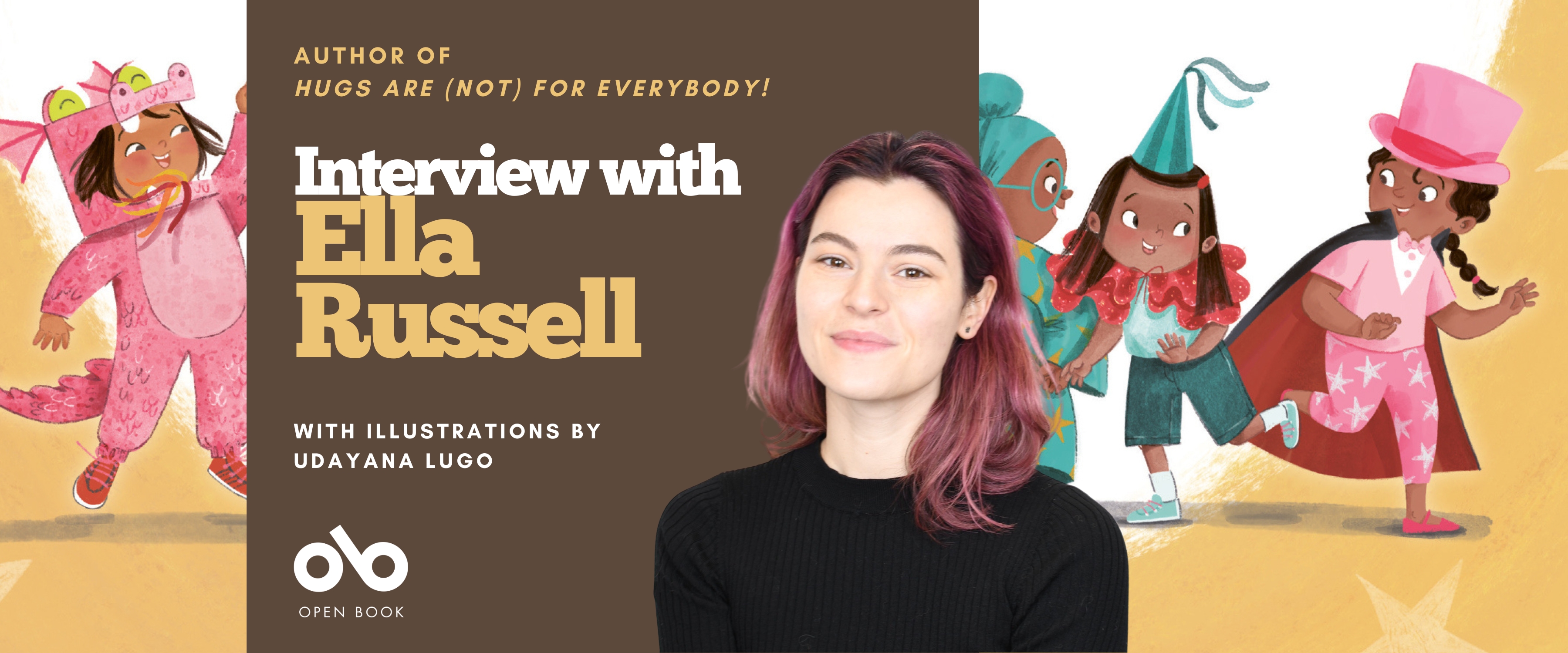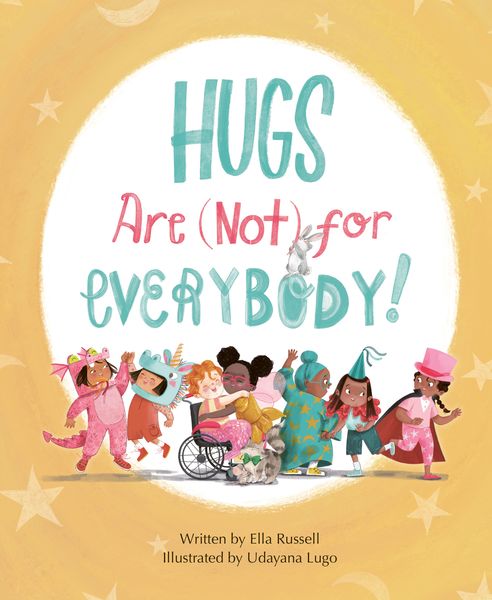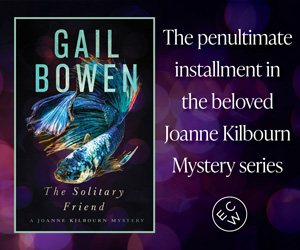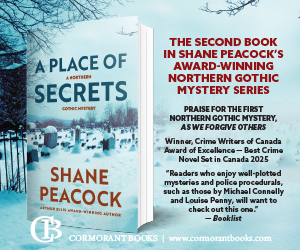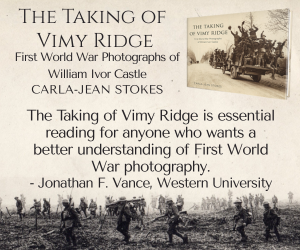Author Ella Russell Shows Why Respecting Boundaries is Important in Hugs Are (Not) for Everybody!
Young people today have plenty to contend with in terms of their social education, and it is heartening to see that they are encouraged to be aware of their own space and autonomy. And, there are excellent, skillful authors out there who spread positive and helpful messages to young readers and their parents, exploring complex ideas on the page in a way that will truly resonate with them.
One of those authors is Ella Russell, who has already made mark with their previous work. In the new picture book, Hugs Are (Not) for Everybody! (Owlkids Books), the author highlights the importance of respecting boundaries and personal space in a succinct story, with vibrant illustrations from the very talented Udayana Lugo.
The book takes us to a birthday party, where games are played and everyone is celebrating happily. During the party, one friend arrives with hugs for all of the other children, but not everybody wants one. This doesn't upset anyone, really. Instead, they all share their various ways of interacting, from hellos to high-fives to super-secret handshakes. All of this shows that there are all kinds of ways to greet each other, and to say happy birthday while still respecting personal boundaries and preferences.
We've got an excellent Kid's Club BFYP interview with the author of this fantastic new title, right here on Open Book. Check it out below!
Open Book:
Is there a message you hope kids might take away from reading your book?
Ella Russell:
Sometimes our unexpected differences can make social interactions feel like a series of awkward hiccups. I hope my book shows how those hiccups can be a really good (sometimes even fun) thing—if we choose to embrace them. We can either make someone feel uncomfortable for not being exactly like us, or we can take the opportunity to get to know that person better and build a stronger friendship by respecting their boundaries and coming up with new ways to celebrate one another. There is no right or wrong way to be when it comes to our preferences—the feeling of right and wrong only comes when we don’t have the tools to communicate and when we forget how to listen.
OB:
Did the book look the same in the end as your originally envisioned it when you started working, or did it change through the writing process?
ER:
It changed lots of times! The general spirit was always the same—I wanted it to feel like a celebration, so the birthday party setting came about early on, and I knew I wanted the same group of kids from Pink Is for Everybody! (plus one new kid!) who all had their own individual ways of celebrating friendship (hugs, waves, high fives, and so on!). But this book was surprisingly tough to write. I had a very clear vision, but that vision included packing a whole slew of nuanced messages about consent into 24 pages. I wanted to make sure that the book didn’t oversimplify the concept of preferences into a division of huggers and non-huggers, and that it was clear that hugs are only one thing that people have preferences about. The scene with the rabbit and the magic trick at the end was an “aha!” idea for introducing the range of circumstances where consent and communication are important, and it wasn’t added to the story until the third or fourth draft. Even after that, my editor Stacey and I were working on revisions to the exact wording of the text all the way through the rough art and final art stages!
Your CanLit News
Subscribe to Open Book’s newsletter to get local book events, literary content, writing tips, and more in your inbox
OB:
Is there a character in your book that you relate to? If so, in what ways are you similar to your character and in what ways are you different?
ER:
The birthday kid! I was a shy kid, and not always good at expressing my own preferences. I was the type of kid to retreat in a “whoosh” from a sticky situation, rather than tell my friend what I needed from them in that moment. I’m much better at it now, but every once in a while that urge to whoosh away does sneak up on me! That might be one reason that I am very fond of the magician character in this book. Even though they come across a little bit fumbling with their repeated offers of hugs all around, they always respond with kindness when their friends don’t want their hug, and they embrace the alternative options to make sure their friends feel comfortable and valued. That’s a quality that I think marks a good friend, and I hope it’s what I offer my friends, too!
That said, I’m not 100% a non-hugger. Sometimes I don’t want a hug from anyone, and sometimes a hug from a friend is exactly what I need. I am always down for a silly and super overcomplicated secret handshake!
OB:
How do you cope with setbacks or tough points during the writing process? Do you have any strategies that are your go-to responses to difficult points in the process?
ER:
It’s an awesome feeling when you show a new creative project to others for the first time and they get it! On the flip side, the toughest part of the writing process by far is when you work really hard to convey a message or write in a goofy moment that is meant to make readers laugh, and then you hear the feedback: “This doesn’t make sense.” Or: “This doesn’t work yet.” Especially when that feedback is coming from people whose opinions you deeply respect! My first instinct is sometimes to be stubborn, but it helps to remember that there is a reason this comment is coming up, and if it’s being flagged now, then I have the opportunity to make sure it doesn’t also confuse readers when the book is finally in their hands! If I don’t agree with a specific suggestion, it helps to look at the problem at the root of the suggestion. That makes it easier to find a new solution that makes everyone happy! Ultimately, the changes that I made be
cause my fantastic editor and the team at Owlkids Books told me “try again” have made the book that much better than the first and second and third versions. I’m a thousand times happier to have received that hard feedback and come out with a version of the book that really nails the message I set out to write.
OB:
What's your favourite part of the life cycle of a book? The inspiration, writing the first draft, revision, the editorial relationship, promotion and discussing the book, or something else altogether? What's the toughest part?
ER:
Hmm, I have a few favourite parts! The moment the idea first sparks and especially the moments when it sticks in your brain and won’t stop growing—proving that there really is something to the idea! Putting the idea into writing is the tricky part, because that process usually comes with the realization that my idea isn’t quite as fully formed as it seemed inside my brain. At the same time, puzzling the missing pieces together brings on lots of exciting aha moments. My other favourite part is when the illustrations start to come in and I watch the story come to life! Udayana, the illustrator of Hugs Are not for Everybody!, is so talented, and opening her illustrations for the first time is always like opening a present that I already know I’m going to love.
_____________________________________________
Ella Russell is a children’s book editor and picture book author with two pets, a cat and a dog. Saffron and Juniper can’t read (yet) but they do enjoy chewing on books. Ella, Saffron, and Juniper live in Toronto, Ontario.
Udayana Lugo worked as a designer of products, interiors and graphics before her love of drawing and children’s books led her to become a children’s book illustrator. Udayana was born in Russia, grew up in Mexico City, and now lives in Richmond, British Columbia, with her husband and two kids.
